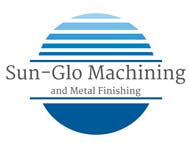There are three parts of the anodizing process, but we’re going to focus on the third and strongest type, which is hardcoat anodizing. Since there are many untrue thoughts and beliefs associated with it, below is a list of hardcoat anodizing facts and misconceptions.
What is hardcoat anodizing? Before we get into the hardcoat anodizing facts and misconceptions, we’ll briefly look at the what the process is. Hardcoat anodizing (Type III anodizing), is an electrochemical process. It creates a controlled oxide film on the surface of aluminum.
One of the significant untruths in the hardcoat anodizing facts and misconceptions is its ideal use. You would use this process only if the material you’re treating requires a denser, thicker, and more resilient coat protecting it from corrosive and damaging environments.
List of Hardcoat Anodizing Facts and Misconceptions
• Hardcoat anodizing is the third type of anodizing process; it’s not the only process. It’s designed to treat aluminum components of products that are subject to heavy-duty use.
• Type III anodizing uses sulfuric acid, high voltage and low bath temperatures to produce an extremely high surface hardness.
• Hardcoat anodizing is electrically resistant and has galvanic neutrality, thus it stops galvanic corrosion when it interacts with different metals.
• It is resistant to atmospheric and marine corrosion
• It has high operating temperatures.
Common Hardcoat Anodizing Facts and Misconceptions – The Benefits
The benefits of hardcoat anodizing, compared to the other, less heavy processes, aren’t fully understood. To help you decide if your project requires this type rather than, say, type 1, review the list below:
• Surfaces can be repaired when hardcoat anodizing is used.
• The color of the coating ranges from light to dark gray, and it can be dyed black. The appearance of the coating depends on the alloy make-up of the aluminum substrate.
• This type of anodizing is compatible with adhesives and has great lubricity.
• The coating from this type of anodizing is harder than tool steel.
• Hardcoat anodizing improves the surface of the metal it’s put on, thus also improving wear resistance.
Chemical Processing Hardcoat Anodizing Capabilities
Here are a few more hardcoat anodizing facts and misconceptions that are related to how it can be applied.
• The process is available with Teflon impregnation to enhance tribological properties.
• Bulk and rack processing is available.
• You can have precision masking applied for selective anodizing.
• You can request taber abrasion testing.
• You can get post anodize seals for stronger corrosion resistance, but it might reduce the hardness of the surface.
• Type I and Type II anodizing can be used as masking.
We hope we’ve cleared up some hardcoat anodizing facts and misconceptions for you to help you decide whether your project requires this process. However, we can help you with your decision making. At Sunglo, we’re experts when it comes to plating. We offer a wide range of finishing processes, including hardcoat anodizing, so you can come to us for just about everything.
For more information about hardcoat anodizing facts and misconceptions, to talk about your project, or to get a quote, you can contact us any time.
Sun-Glo Machining and Metal Finishing
quotes@sun-glo.com
800-741-1456
